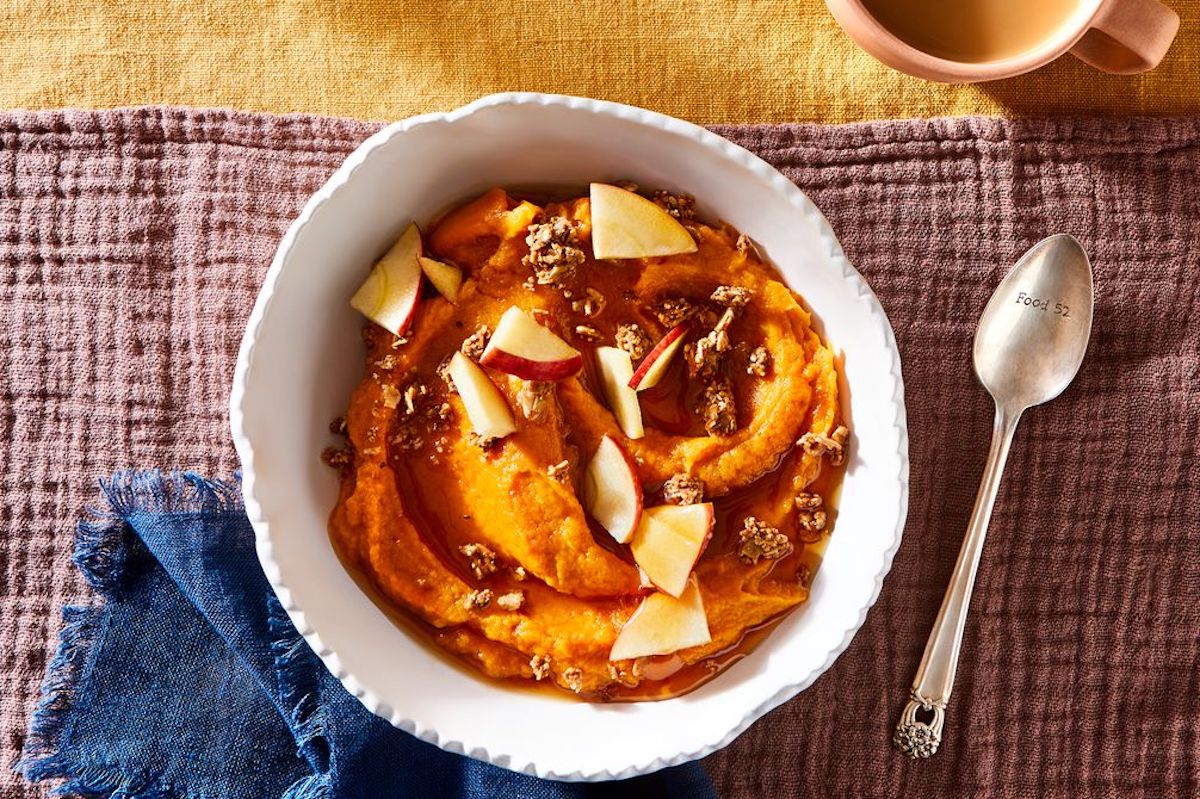I feel intimately connected to every item in my kitchen. There’s the bowl I love to eat my oatmeal out of, the mug I only use for morning coffee, my favorite fork, the whisk I bought in college, my light green mandoline. I carry my favorites with me from apartment to apartment, sometimes even city to city. Some items — the hard-boiled-egg slicer — don’t stand the test of time. But the tried-and-true are here to stay.
That’s why, when I uncover a new, must-have kitchen tool, it feels like a revelation. Enter the tamis. What is a tamis? It looks like a springform pan, but with a flat metal sieve across the bottom. In Indian cooking, a chalni accomplishes a similar purpose. Others may know the tamis as a fine mesh strainer or a drum sieve (named for its shape).
Though for many the tamis may be nothing new, for me it’s opened an entire world of culinary possibility.
The crux of the tamis’s magic is in its flat mesh bottom. Unlike, say, a colander or a cylindrical strainer, the horizontal bottom allows for a more even and controlled straining experience, especially if you coax the substance through with a scraper.
Writers like Amy Scattergood have been proclaiming the benefits of the tamis for over 10 years now. In 2007, she published a piece in The Los Angeles Times extolling the virtues of the lesser-known kitchen tool. She talks to a bevy of restaurant chefs who swear by the tamis to accomplish anything from sifting flour to preparing gnocchi dough.
Andrea Galan, a former MasterChef contestant who’s worked in New York City and Barcelona, says every professional kitchen she’s worked in has used a tamis. “I remember at Abac, a Michelin three-star restaurant in Barcelona,” she says, “every day I had to make fresh mashed potatoes and I had to peel, boil, and strain tiny potatoes using the tamis.” At Dirt Candy in New York, she passed a spinach purée through their tamis to make a super-smooth concentrate that would form the base of a spinach spaetzle. “It’s a great tool for separating fiber.”
Our former test kitchen chef, Josh, even created a mashed potato recipe that calls for using a tamis. After softening the spuds in boiling water, he recommends smashing them through the tool. I imagine a dough scraper would work perfectly here, and can just see the softened potato eking through the mesh bottom, falling below into a soft mound of purée.
“I had never heard of a tamis until I started working in kitchens, but chefs love them for sifting clumpy dry ingredients like cocoa powder or confectioners’ sugar, or analog-puréeing softies like roasted sweet potato or ripe avocado,” says Food Editor Emma Laperruque. “The catch is it’s bulky, which is probably why I never invested in one in my own kitchen. I might not have anything as versatile as a tamis, but there’s almost always a tamis understudy (like a fork or whisk or fine mesh strainer) for whatever I need to get done.”
Though the tamis dates back to the Middle Ages, it hasn’t trickled down into the average home cook’s arsenal. A cursory search for #tamis on Instagram reveals a tool used more for decor than any hardcore kitchen tasks. Perhaps it’s time that changed.
More essential tools:


